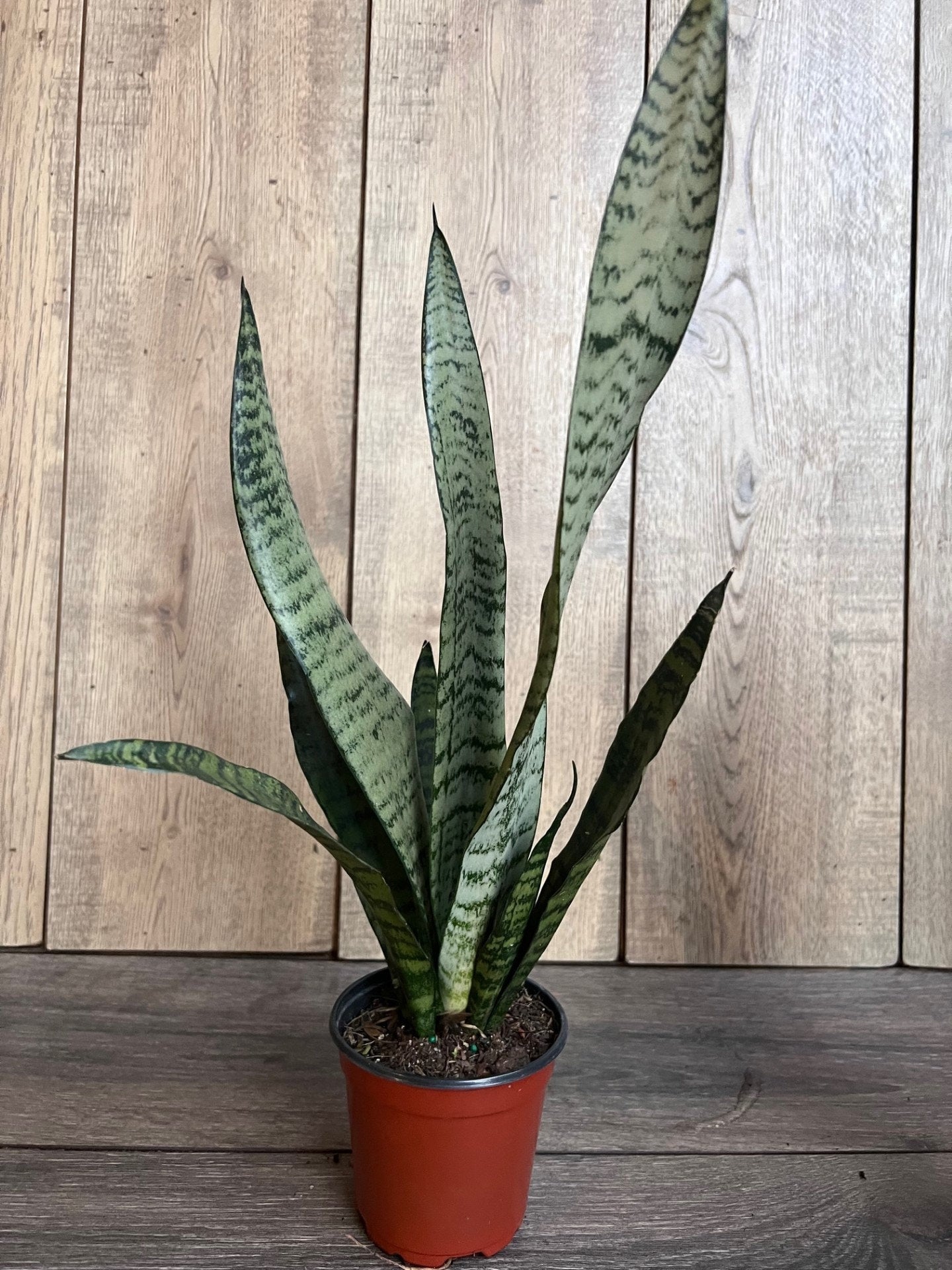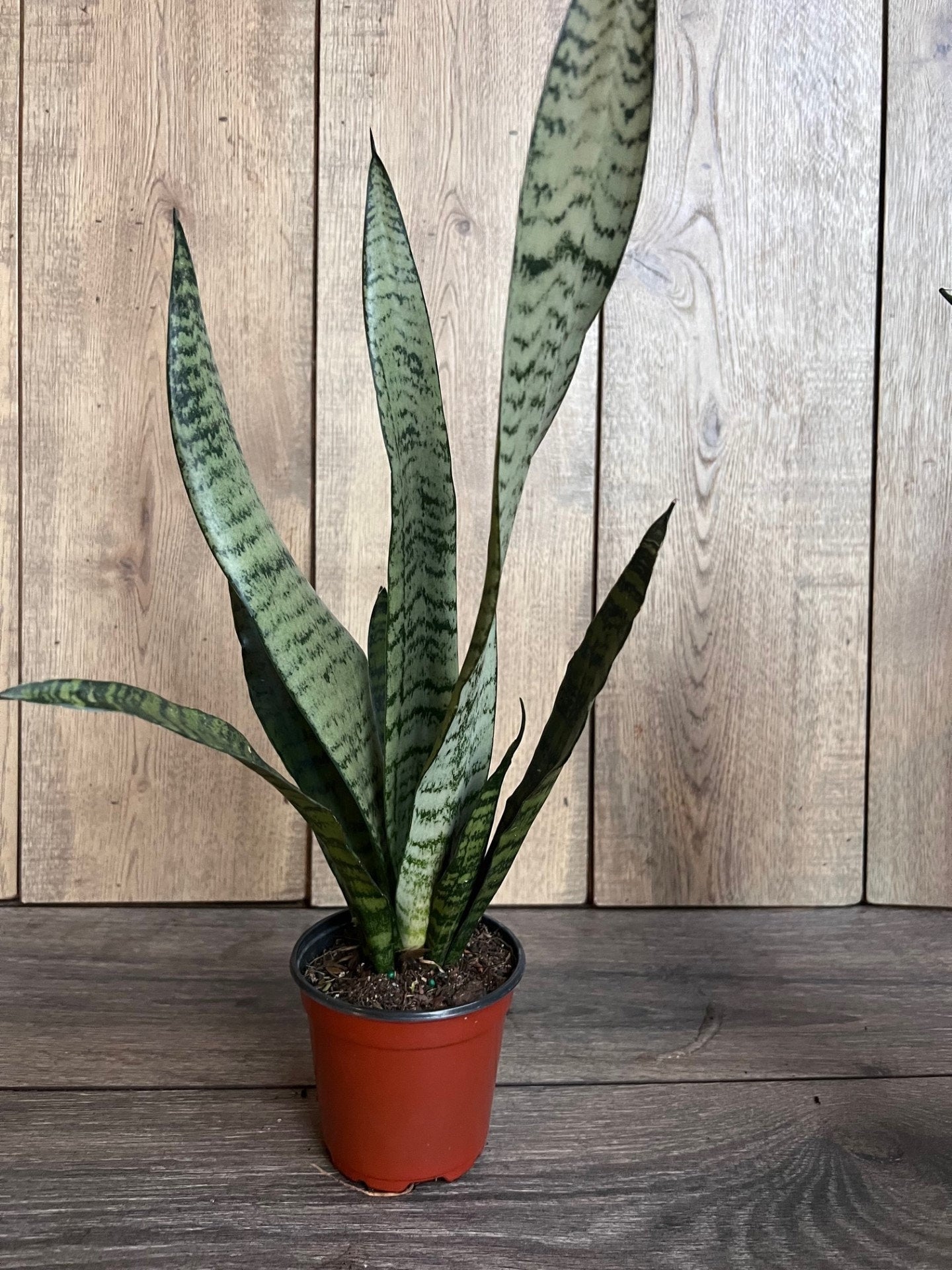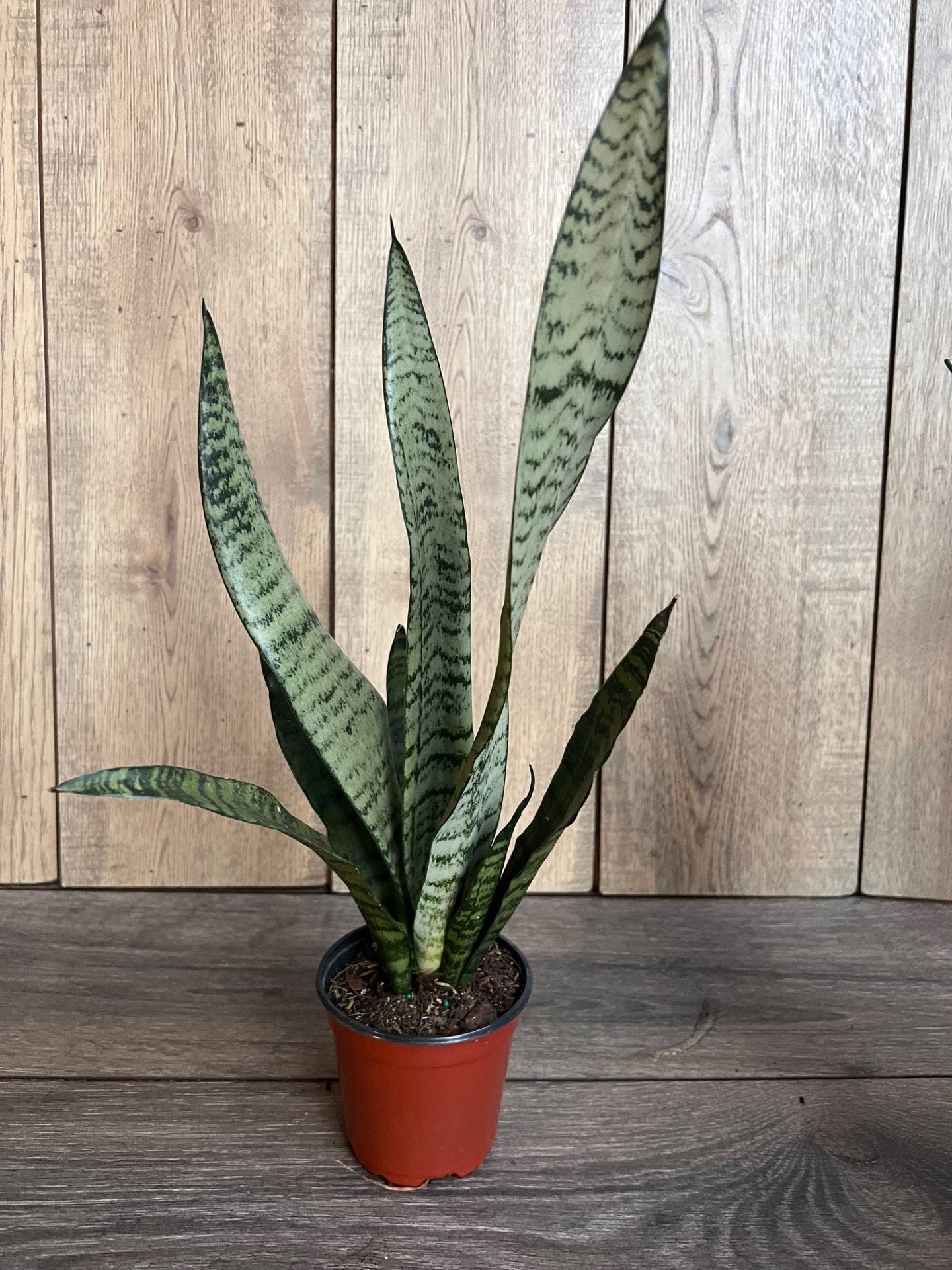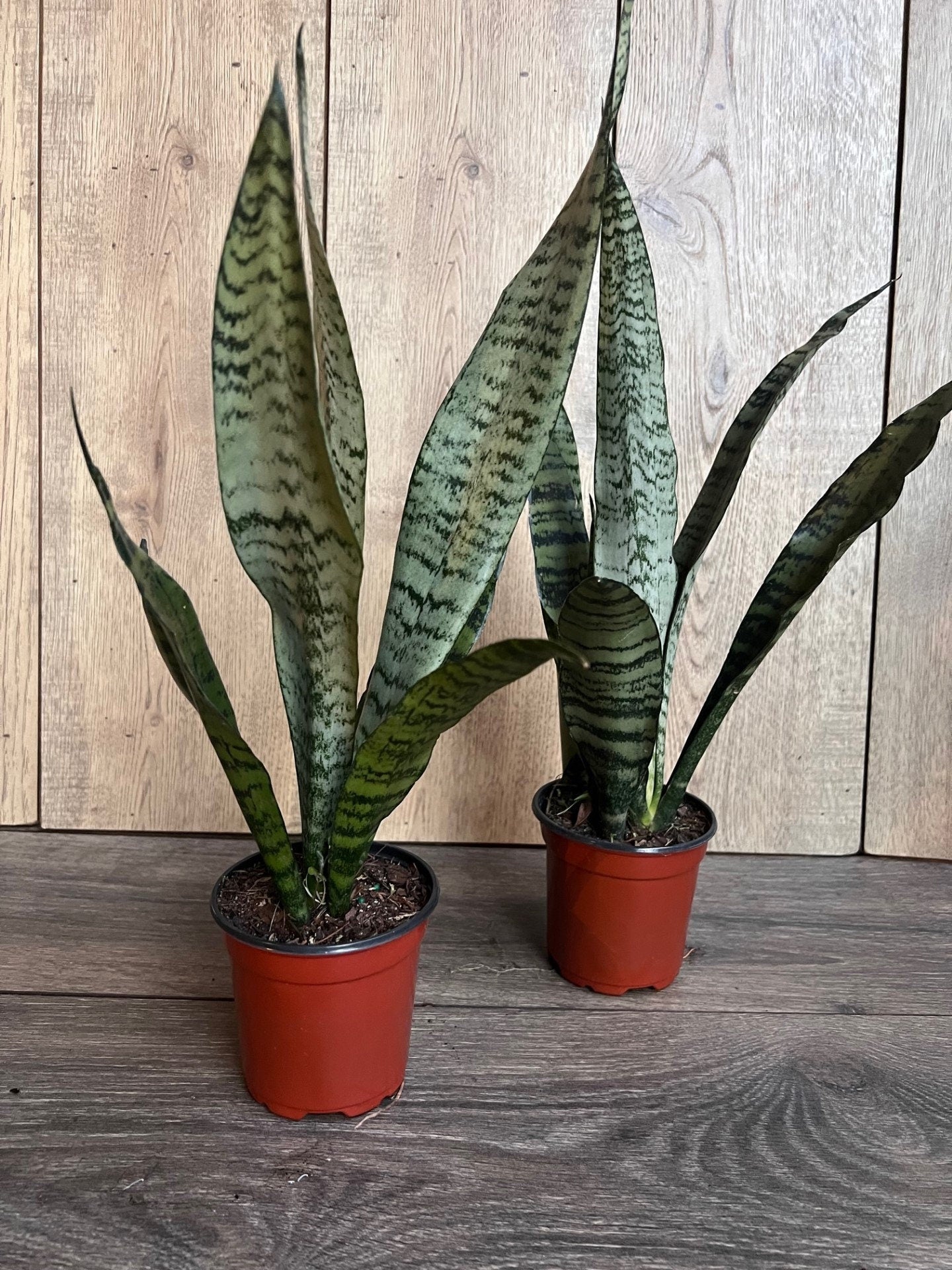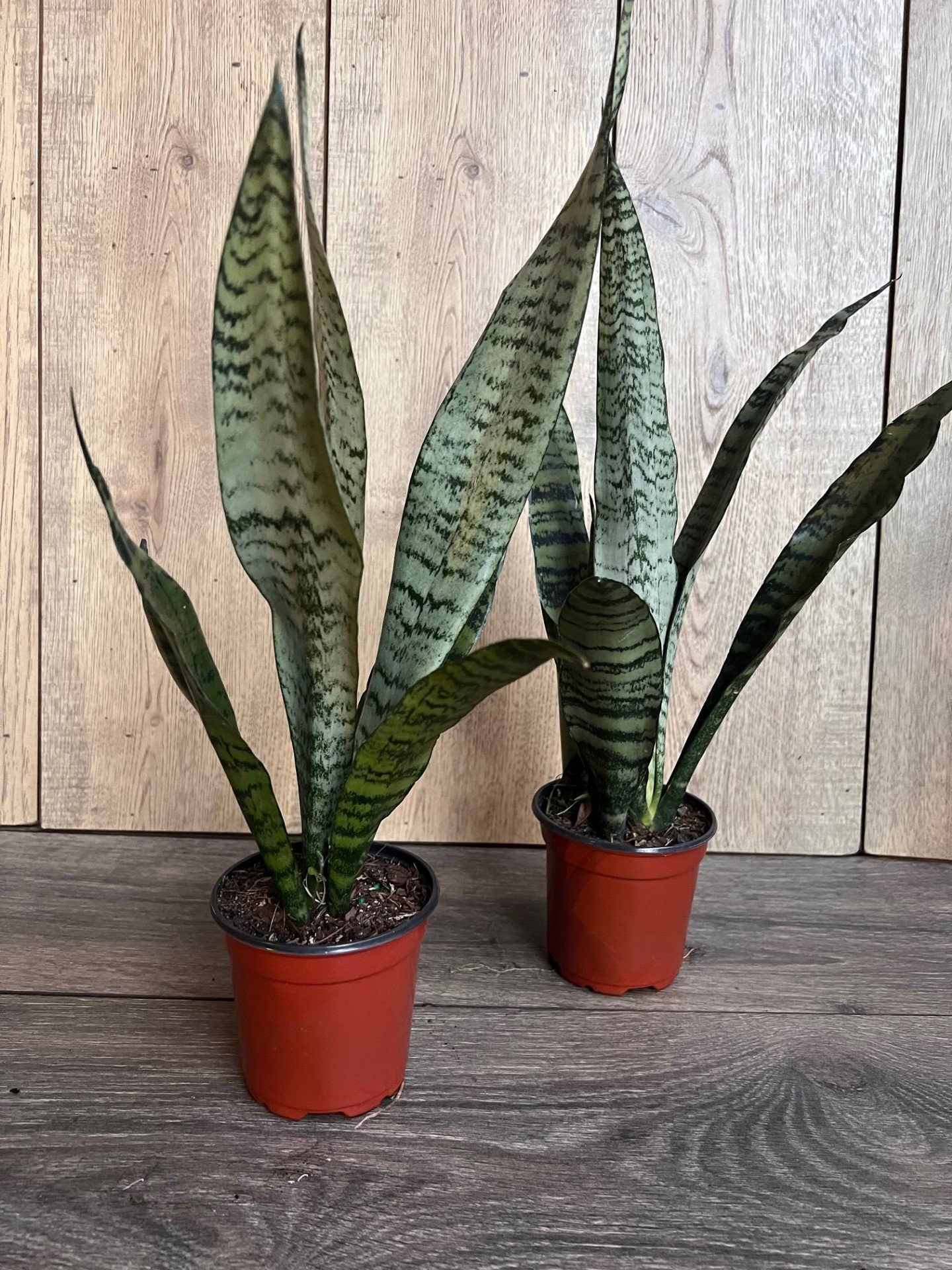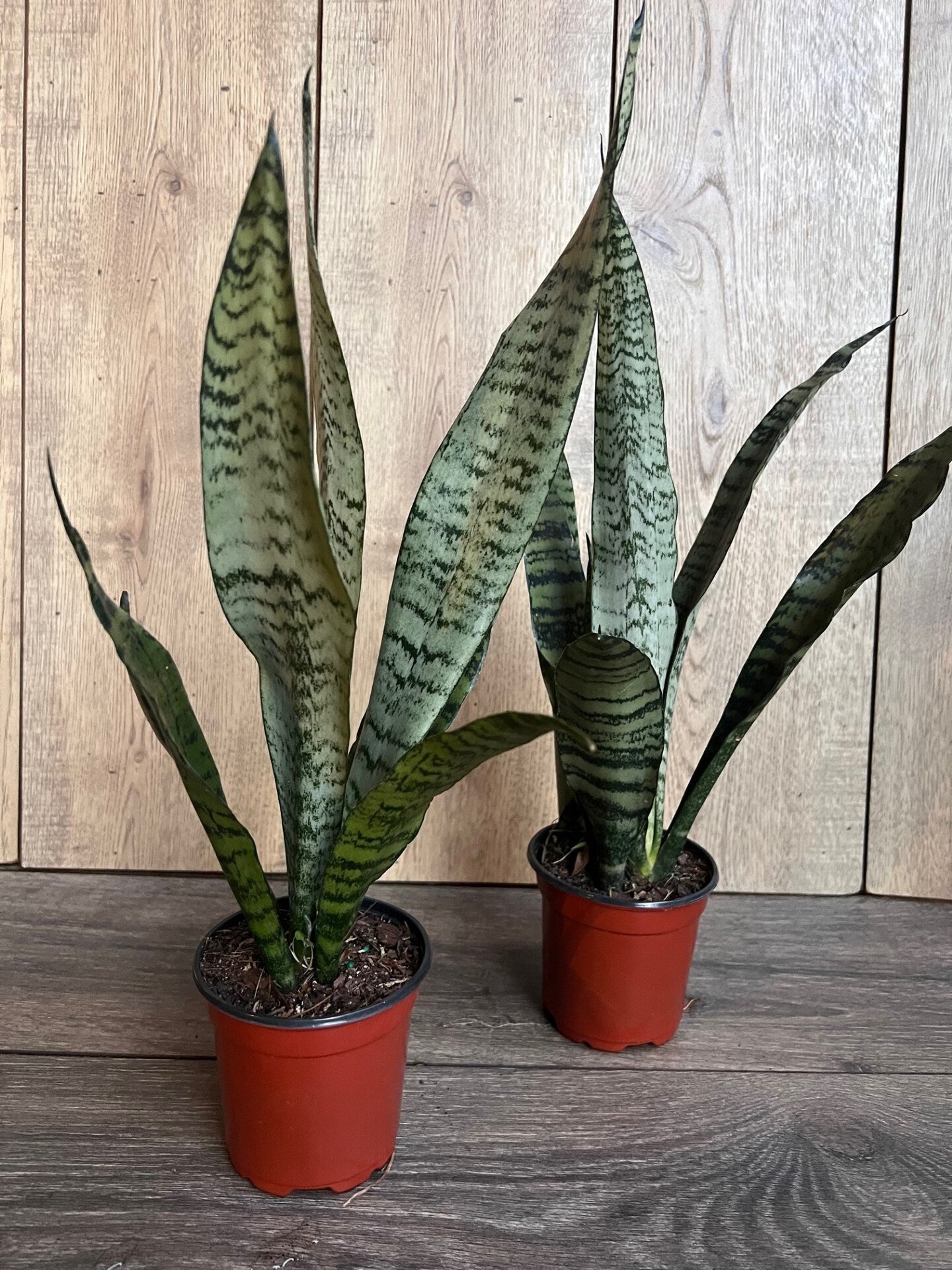Sansavieria Zeylanica, in 4"pot, snake plant
Sansavieria Zeylanica, in 4"pot, snake plant
Couldn't load pickup availability
Note: You will receive Sansevieria Zeylanica in 4" Pot similar to the pictures
Sansevieria zeylanica, commonly known as Ceylon snake plant or Sri Lankan mother-in-law's tongue, is a hardy, low-maintenance succulent native to Sri Lanka and India. This variety of Sansevieria features upright, dark green leaves with distinctive light gray-green horizontal stripes, creating a striking, vertical appearance. It is well-known for its ability to tolerate a wide range of conditions, including low light, irregular watering, and fluctuating temperatures, making it an excellent choice for beginners or anyone seeking a tough, resilient houseplant. Sansevieria zeylanica is also praised for its air-purifying qualities, as it can help remove toxins from indoor environments while being virtually pest- and disease-free. This plant thrives in well-draining soil and should be watered infrequently, allowing the soil to dry out between waterings to prevent root rot
1. Light
- Low to bright indirect light: Sansevieria zeylanica is adaptable and can tolerate low light, making it a great option for low-light spaces like offices or bathrooms. However, it will grow best in bright, indirect light. Too much direct sunlight can scorch the leaves, especially in hot climates, so it’s best to place it in a spot with filtered light.
2. Watering
- Infrequent watering: This plant is highly drought-tolerant and can go long periods without water. Water when the soil has dried out completely, usually every 2-4 weeks depending on the season. During the winter months, reduce watering further as the plant's growth slows down.
- Avoid overwatering: Overwatering is a common mistake and can lead to root rot. Ensure the pot has good drainage, and never let the plant sit in standing water.
3. Soil
- Well-draining soil: Sansevieria zeylanica thrives in well-draining soil. A cactus or succulent mix works well, or you can mix regular potting soil with perlite or sand to improve drainage. The key is to ensure that water doesn't linger around the roots.
4. Temperature
- Warm temperatures: Sansevieria zeylanica prefers temperatures between 60°F to 85°F (16°C to 29°C). It can tolerate slightly cooler conditions but should be kept above 50°F (10°C), as it is sensitive to frost. Avoid placing it in locations with drafts or sudden temperature fluctuations.
5. Humidity
- Low humidity: This snake plant is not picky about humidity and will do well in average indoor humidity levels. If you're growing it in a particularly dry environment, occasional misting may help, but it’s not a necessity.
6. Fertilizing
- Minimal fertilization: Sansevieria zeylanica does not require much fertilizer. Feed it with a diluted, balanced liquid fertilizer once a month during the growing season (spring and summer). Avoid fertilizing in fall and winter when the plant is not actively growing, as too much fertilizer can damage the roots.
7. Pruning
- Occasional pruning: Prune away any dead or damaged leaves to keep the plant looking tidy. Sansevieria zeylanica typically doesn’t require heavy pruning, but you can trim the leaves back to maintain its shape if needed. Use clean, sharp scissors or pruning shears to avoid damaging the plant.
8. Repotting
- Repot every 2-3 years: Sansevieria zeylanica grows slowly and doesn’t need frequent repotting. Repot the plant every 2-3 years or when it outgrows its pot. Choose a container that’s 1-2 inches larger in diameter than the current one, ensuring it has drainage holes.
9. Pests and Diseases
- Resistant to pests: This snake plant is generally pest-resistant, but it can occasionally attract mealybugs or scale. Inspect the leaves for any signs of pests and treat them with insecticidal soap or rubbing alcohol if necessary.
- Root rot: The most common problem with Sansevieria zeylanica is overwatering, which can lead to root rot. Ensure that the soil is well-draining and that the plant is not sitting in water.
10. Propagation
- Propagation by leaf cuttings: You can propagate Sansevieria zeylanica by cutting a healthy leaf into sections (about 3-4 inches long), letting them dry for a day or two, and then planting them in well-draining soil. Keep the soil slightly moist until new roots develop, which can take several weeks.
With its tolerance for neglect and easygoing nature, Sansevieria zeylanica makes a great addition to any home or office, requiring minimal care while offering beautiful, upright foliage.
Share

